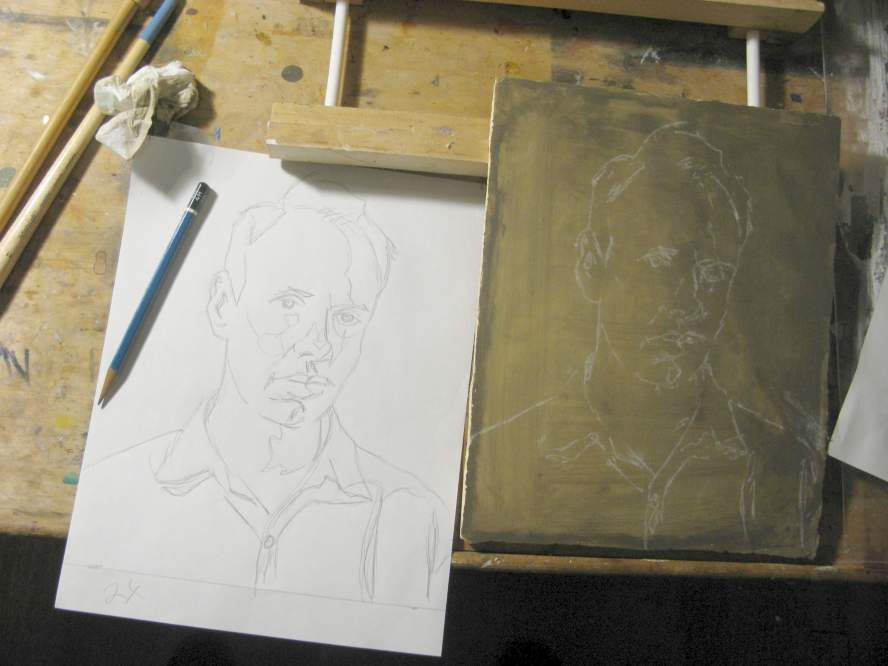This picture shows the Activa Supreme tile I made in the previous post that has now been mounted to a thin piece of plywood cut to the same size. This adds a little more weight to the tile, but not much, and has a better benefit of adding strength to resist cracking or damage. It’s now ready for painting, but before I get to that I wanted to test out another idea of creating a paint surface with this air-dry clay.

In this photo I’m painting thin coats of the clay onto a stretched sheet of paper. I’ve made a wet “slip” from the Activa clay by adding water to create a slurry that’s approximately 40% water. I do what I refer to as double coats much like how I apply traditional gesso, which is one thin coat in one direction that I let dry before adding another coat in the opposite direction. I repeat this nine times so that there are essentially eighteen thin coats on this sheet of paper.

Here is the finished surface with eighteen coats. It took about an hour to “paint” this slip in this manner. Ceramicists are familiar with clay slip for making repairs or adding decorations to their pottery, and this is roughly the same thing. There is also a way to make a thicker casting slip to pour into a mold, but it requires using deflocculants to keep the drying clay from cracking. I didn’t want to get into that. Painting the slip onto the paper in this way let me avoid any cracking issues. I could have painted this directly on a more firm surface rather than paper, but this slip is very wet and I’d likely have problems with that much water causing a board to warp and twist, which is not good for dried clay. In the photo above notice that I laid a piece of the tile sample on the corner, and that tile is slightly darker than the slip coated paper. Not sure why this is, since it’s the same material, and it’s opaque enough that the paper shouldn’t show through. Interesting.
Here I have removed the slip covered paper from the frame, and mounted it to a thin sheet of foamcore. This will give it the firmness I need without the extra weight of using plywood or hardboard. I will need to lightly sand this surface a little to smooth it out a bit, and then it will be ready for painting.
One of the issues I had comparing the tile I made with the Permastone or Wood putty casting material for painting is that this air-dry clay was more expensive by volume when made into an equal sized tile. However, using this slip method eliminates that problem. I estimate I only used about half a pound of clay to make enough slip to coat this sheet of 9 x 12″ paper. So, from that chunk of clay I should have enough to make 6 or 7 sheets at that size.
Finally ready now to do some painting on these, but first thing is to spend some time cleaning up the studio. It’s a mess in there.
































